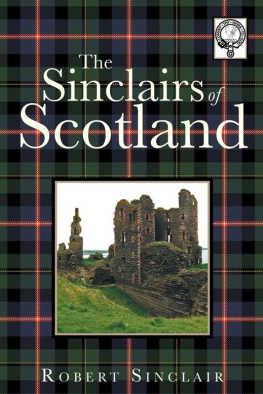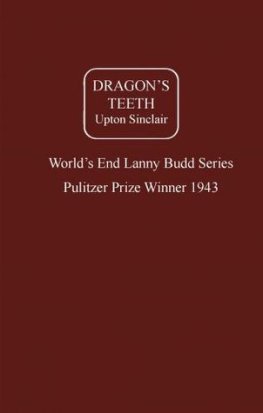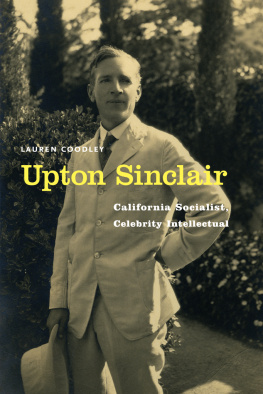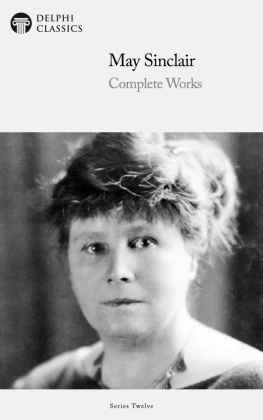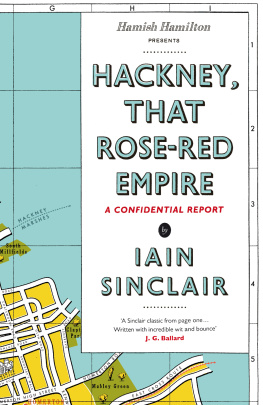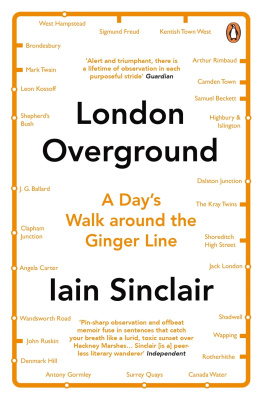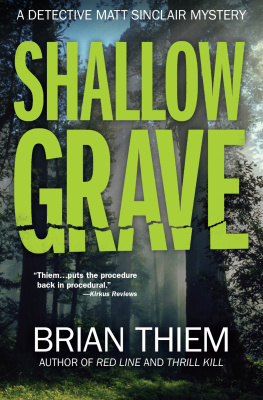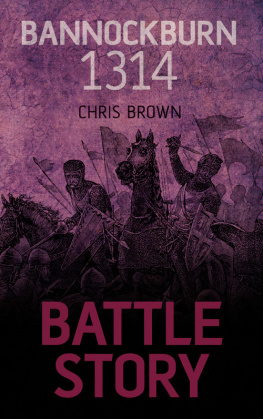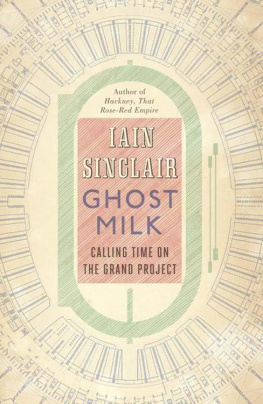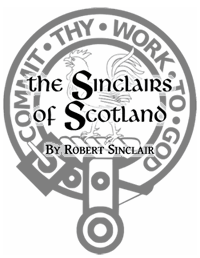

AuthorHouse UK Ltd.
1663 Liberty Drive
Bloomington, IN 47403 USA
www.authorhouse.co.uk
Phone: 0800.197.4150
2013 Robert Sinclair. All rights reserved
No part of this book may be reproduced, stored in a retrieval system, or transmitted by any means without the written permission of the author.
Published by AuthorHouse 06/05/2013
ISBN: 978-1-4817-9570-8 (sc)
ISBN: 978-1-4817-9623-1 (e)
Any people depicted in stock imagery provided by Thinkstock are models,
and such images are being used for illustrative purposes only.
Certain stock imagery Thinkstock.
Because of the dynamic nature of the Internet, any web addresses or links contained in this book may have changed since publication and may no longer be valid. The views expressed in this work are solely those of the author and do not necessarily reflect the views of the publisher, and the publisher hereby disclaims any responsibility for them.
Contents
Castle Sinclair and Girnigoe [5.1] is a castle located on a rocky promontory jutting out into Sinclairs Bay [Ch 1] about 3 miles north of Wick on the east coast of Caithness, Scotland. It is one of the earliest seats of Clan Sinclair. [Ch 3] The castle, an L-plan crow-stepped gabled [1/1] tower house, is a ruin and is being restored by its owner, The Clan Sinclair Trust [2/1] . It is the only castle in Scotland to be listed by The World Monuments Fund. [3/1] This once im-pregnable medieval/renaissance stronghold, is now the most spectacular ruin in the North of Scotland. On 21 st Oct. 1601, George Sinclair, 5 th Earl of Caithness, [Ch 4] was, by an Act of Parliament, allowed to change the name of Girnigoe Castle to Sinclair Castle.

Rollo on the Six Dukes statue in Falaise (Normandy) town square.
This book presents a history of the Sinclairs since they first came to Britain from France in the 11 th century. They arrived with William the Conqueror, [4/1] during the Norman [5/1] invasion [6/1] , of England and settled there for a short time before moving to Scotland. Their roots can be traced back to the Norwegian Warlord Rollo. [7/1] Rollo (c. 846c. 931), baptised Robert, and so sometimes numbered Robert I , to distinguish him from his descendants, was a Norse noble-man of Norwegian or Danish descent and founder and first ruler of the Viking, [8/1] principality in what soon became known as Normandy. [9/1] His descendants were The Dukes of Normandy. [10/1] Rollo is in fact, the great-great-great-grandfather of William the Conqueror. Through William, he is an ancestor of the present-day British royal family , as well as an ancestor of all current European monarchs and a great many pretenders to abolished European thrones.
This is the first of a series of books about the Sinclairs. The first volume finishes with descriptions of the castles either owned or occupied by the Sinclairs. Also included is a description of the pre-Sinclair Earls of Orkney and Caithness since the Birth of Scotland in 843. [11/1] In all, there are 9 books in the series on different aspects of life in Scotland for the Sinclairs. Below is a summary of what each book in the series contains:
In Britain, hereditary surnames were adopted in the 13 th and 14 th centuries, initially by the aristocracy but eventually by everyone. By 1400 most English and Scottish people had acquired surnames, but many Scottish and Welsh people did not adopt surnames until the 17 th century, or even later. Henry VIII (14911547), [12/1] ordered that marital births be recorded under the surname of the father. Most surnames of British origin fall into seven types:
Occupations | Archer, Bailey, Baker, Brewer, Butcher, Carter, Chandler, Clark, Collier, Cooper, Cook, Carpenter, Dyer, Faulkner, Fisher, Fletcher, Fowler, Fuller, Glover, Hayward, Hawkins, Head, Hunt or Hunter, Judge, Knight, Miller, Mason, Page, Palmer, Parker, Porter, Sawyer, Slater, Smith, Taylor, Thatcher, Turner, Shoemaker, Walker, Weaver, Wood or Woodman and Wright (or variations such as Cartwright and Wainwright). |
Personal characteristics | Short, Brown, Black, Whitehead, Young, Long and White etc. |
Geographical features | Bridge, Camp, Hill, Bush, Lake, Lee, Wood, Holmes, Forest, Underwood, Hall, Brooks, Fields, Stone, Morley, Moore and Perry etc. |
Place names | Washington, Everingham, Burton, London, Leighton, Hamilton, Sutton, Flint and Laughton etc. |
Estate | For those descended from land-owners, the name of their holdings, manor or estate. |
Patronymics, [13] matronymics, [14] or ancestral | Often from a persons given name. e.g. from male name: Richardson, Stephenson, Jones (Welsh for John), Williams, Jackson, Wilson, Thompson, Benson, Johnson, Harris, Evans, Simpson, Willis, Fox, Davies, |
Reynolds, Adams, Dawson Lewis,Rogers, Murphy, Nicholson, Robinson, Powell, Ferguson, Davis, Edwards, Hudson, Roberts, Harrison, Watson, or female names Molson (from Moll for Mary), Madison (from Maud), Emmott (from Emma), Mariott (from Mary) or from a clan name (for those of Scottish origin, e.g., MacDonald, Forbes, Henderson, Armstrong, Grant, Cameron, Stewart, Douglas, Crawford, Campbell, Hunter) with Mac Scottish Gaelic, [15/1] for son. |
The original meaning of the name may no longer be obvious in modern English, (e.g. a Cooper is one who makes barrels and the name Tillotson is a matronymic from a diminutive for Matilda). A much smaller category of names relates to religion, though some of this category are also occupations. The names Bishop, Priest or Abbot for example, may indicate that an ancestor worked for a bishop, a priest or an abbot respectively, or possibly took such a role in a popular religious play. Spelling of names in past centuries is often assumed to be a deliberate choice by a family, but due to very low literacy rates, many families could not provide the spelling of their surname and so the scribe, clerk, minister or official, would write down the name on the basis of how it was spoken or how they heard it. This results in a great many variations, some of which occurred when families moved to another country (e.g. Wagner becoming Wagoner or Whaley becoming Wheally). With the increase in bureaucracy, officially-recorded spellings tended to become the standard for a given family.
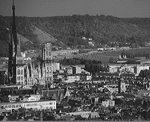
Saint-Clair-sur-Epte
Sinclair is one of the oldest surnames in Europe and can be traced back through centuries of history. It has its origins in Saint-Clair-sur-Epte, [16/1] in normandy , [9/2] France and is in turn derived from a hermit called St. Clare , St. Clere or St. Clair , who became a local saint. He lived near the town that is now called St. Clair sur lEpte. His feast day is 16 th July. In 1999, an emissary of the Sinclair family attended St. Clairs feast in the town. The Epte is a river in Seine Mari-time and Eure in Normandy, France. It is a tributary of The Seine. The river rises in Seine-Maritime in The Pays de Bray, near Forges-les-Eaux. The river empties into the Seine, not far from Giverny. [17] In 911, The Treaty of Saint-Clair-sur-Epte, [18/1] established the river as the historical boundary of Normandy and le-de-France. were nine saints in all at different times and places named Clarus . (The Sinclair namesake, St. Clair, is not to be confused with Saint Clare or Sainte Claire in French. She was the founder of the Poor Clares, a monastic order associated with the Franciscans of St. Francis of Assisi. She is the namesake of Santa Clara, California, just as Francis is the namesake of San Francisco California, where Spanish missionaries left their names).
Next page
